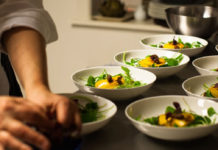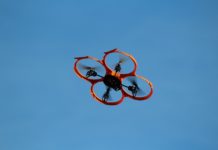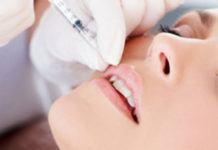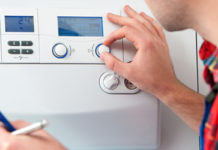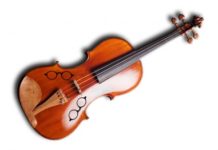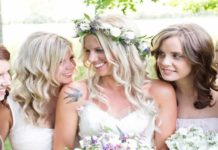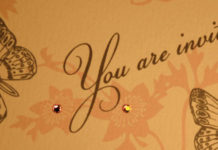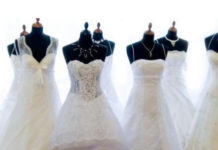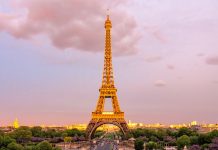What are Koi?
Koi are a small ornamental variety of carp, that are bred for the purpose of keeping as pet fishes, or as decoration in large outdoor lakes or ponds. Koi are fish that were originally bred in Japan, but have gained popularity across the world. They are preferred as ornamental fish due to their bright colors, and are often called ‘living flowers’. They are very friendly fish and are fairly easy to maintain, granted they are given a good pond to live in. Building a Koi pond can seem difficult at first, with choosing a size, getting permission and supplying enough water. But if planned properly, it can be quite easy.
What are the requirements for a Koi pond?
A Koi pond needs to be large enough to allow the koi to swim freely, and deep enough to ward off any potential predators such as foxes, dogs, or raccoons. A koi pond should be able to accommodate at least two koi, although most owners go for more. If the pond is not deep enough, it might end up freezing completely in winters, which can potentially kill all the fish. A good depth for most ponds will be about four to six feet, although it depends on the size and the number of fish living in it.
This means that the owners need to make sure they have the permission from local authorities to dig such a large pond, besides having a fence to prevent accidental drowning in the pond. It might also be necessary to intimate local authorities about underground pipelines supplying water to the pond to prevent digging into it, causing pipeline bursts.
After all, no one wants to start building a pond only to have local authorities stop its completion, and force them to move it.
Necessary steps:
There are a few steps towards installing and building a Koi pond. The first step is to select a location where to build the pond. Most homeowners like to have the pond sufficiently close to the house to be able to see all of it. The pond must be clear of any trees in its vicinity so that it gets ample sunshine. Lack of sunshine can cause algae blooms, which is bad for your koi as well as your pond. Be sure to place your pond in such a way that water does not accumulate from elsewhere in the pond, as rainwater containing fertilizers might collect in the pond, disturbing the ecosystem there.
Selecting a size for the pond:
Many owners end up building small ponds in hopes of saving space, but regret it later as they are unable to add more koi into it. You should go for a pond that is big enough to accommodate at least 2 more koi than what you initially buy, to give some breathing room, but small enough that it fits comfortably in your backyard. On an average, a pond 12 feet by 16 feet is large enough for most people and is also within most people’s budgets.
Cost of excavation and DIY options:
Many homeowners might want to hire professionals to excavate the land for their Koi pond, but it does not come cheap. Professional excavation can cost upwards of $1200 and it only goes up with size. However, letting the professionals do the job makes sure that the job is safely done and that the pond does not have problems later. One can cut down costs and save money on excavation if they do it themselves, although that is advisable only for smaller ponds.
Equipment required:
Keeping Koi can be a commitment and besides the pond, there are some equipment that are must haves to keep these beautiful fish. The pond should be completely lined to prevent water from seeping through the sides and the floor. PVC lining is cheap and easy to find, but it will wear out after a few years. Most homeowners therefore go for sturdier synthetic rubber lining. Besides being the right material, the lining should also be of the right size. Other must have equipment includes a water pump to keep the circulation of water in the pond maintained, a filtration device to clean the water constantly, and an ultraviolet sanitizer to make sure the water stays free of bacteria and algae.
Koi are very easy to maintain, and generally are not bothered by cold water, but they stop feeding if the water drops below 50º F. This also means that they grow slower in cold waters. If the water gets too cold, the Koi might start to become less active. If you want to have your fish all active and growing as fast as they can, installing a heater will help. The heater will also help during winters to prevent the pond from freezing over.
Cost for the equipment:
All the equipment above will cost you around $280 – $850 depending on what all you choose to have in your Koi pond.
- Liners: They will cost $30- $50 per square feet, depending on the material.
- Water pump: It will cost you around $60 for the smaller models to $300 for the more powerful 5000 gallons per hour models.
- Heaters: They will cost you $200- $500 for the heater itself (excluding electricity and usage costs)
Selecting and getting koi:
Buying koi can be a tedious job as many aquariums mistake ‘outdoor Japanese pond fishes’ for large goldfish. However, you should be able to find an aquarium that stocks koi near you pretty easily if you do some research. With keeping koi becoming increasingly popular, many koi clubs have sprung up across the world. You should find one such club nearby and join it to know more about where to get fish, and what the fish would cost. Many club members might also want to give away or to trade their fish to fit the needs of their pond.
Koi come in many different colors, varieties and patterns. One one end of the spectrum are pond-quality koi, which are healthy koi meant to be kept in household ponds. They are usually simple fish which don’t cost much, but they won’t win over any koi show judges. On the other end of the spectrum are show-quality koi. These are fishes bred solely for the purpose of being part of koi shows. They are very beautiful with distinct markings and have a very pure bloodline (genes). These fish can cost upwards of $3000 and some top quality breeding koi can even sell for $100,000!
Cost of koi:
Koi can cost anywhere from between $5- $10000 and above, depending on the size and quality of fish you select.
- 3 inch koi: They are the cheapest variety of fish and are recommended for first time fish owners. They can cost between $5 and $30 depending on their color and grade.
- 22 inch koi: They are larger fish and can cost between $600 – $3000.
- Full size koi (40 inches and above): They are the best quality of koi available, and are usually only show-quality koi. They can cost upwards of $10000 online.
Usually, it’s a good idea for most new koi owners to start off with a few small koi and work their way upwards, keeping more expensive koi as they get better at maintaining them. It is also worth mentioning that swapping and trading koi at a koi club will save you a lot of money, as many owners are willing to give away good quality fish at low prices as their ponds need room for newer fish.
Caring for koi:
Caring for your newly bought koi can be a big job as no one wants to see their precious ‘living flowers’ in the mouth of a heron or a raccoon. Building the pond sufficiently deep should deter predators, as well as give the koi comfortable room to swim. Koi can jump out of the water and it is thus important to keep the pond walls high enough to prevent them from drying out. It might help to keep the pond’s edges covered. Another way to prevent predators from looking at your koi with prying eyes, is to keep decoys near the pond. That way, other animals will not try and catch your fish, seeing one of them already sitting there. While keeping your koi, there is the ongoing cost of fish food, which costs $1 – $2 per pound. Also, there might be some kind of repair or maintenance required, which can run you another $500, for which you should seek professional help.
Total cost of building a koi pond:
Keeping everything in mind, a typical koi pond will cost something between $2000-$3000 for 3 medium sized good quality koi. Costs will increase with more koi, but as one becomes more experienced, these costs will not be anywhere near the amount of joy these fish provide.


